Fast Facts
- When: 29th June to 21st July 2024
- Where: France & Italy
- Watch: Eurosport & ITV
- Official Website: Tour de France
The Tour de France if often thought of as the pinnacle of endurance cycling. It’s the ultimate test for any rider who will have to cover thousands of miles over what seems a very short timeframe in comparison.
The next running of this annual spectacular will begin in Florence, Italy, but instead of finishing in the traditional fashion along the Champs-Elysees in Paris, the final stage in 2024 will be a time trial from Monaco to Nice. This is due to Paris hosting the 2024 Olympic Games. Between there is the small matter of over 3400 km of gruelling mountain climbs, nail biting descents, and of course two rest days for riders and spectators to catch their breath.
France’s wait for a home winner stretches back over 30 years whilst Britain boasted six winners in seven years between 2012 and 2018.
Existing Customer Free Bets & Money Back Offers
Note: Offers will appear here nearer the event as and when they become available.
Stats Articles
- How Many Riders Have Won the Triple Crown of Cycling?
- Tour de France Riders That Have Won Multiple Jerseys/Classifications in the Same Tour
Event Stats
Grand Tour Winners 2010 to 2023
| Year | Giro d’Italia | Tour de France | Vuelta a Espana |
|---|---|---|---|
| 2023 | Primoz Roglic | Jonas Vingegaard | TBD |
| 2022 | Jai Hindley | Jonas Vingegaard | Remco Evenepoel |
| 2021 | Egan Bernal | Tadej Pogacar | Primoz Roglic |
| 2020 | Tao Geoghegan Hart | Tadej Pogacar | Primoz Roglic |
| 2019 | Richard Carapaz | Egan Bernal | Primoz Roglic |
| 2018 | Chris Froome | Geraint Thomas | Simon Yates |
| 2017 | Tom Dumoulin | Chris Froome | Chris Froome |
| 2016 | Vincenzo Nibali | Chris Froome | Nairo Quintana |
| 2015 | Alberto Contador | Chris Froome | Fabio Aru |
| 2014 | Nairo Quintana | Vincenzo Nibali | Alberto Contador |
| 2013 | Vincenzo Nibali | Chris Froome | Chris Horner |
| 2012 | Ryder Hesjedal | Bradley Wiggins | Alberto Contador |
| 2011 | Michele Scarponi* | Cadel Evans | Juan Jose Cobo |
| 2010 | Ivan Basso | Andy Schleck* | Vincenzo Nibali |
Tour de France Minor Classification Winners – 2010 to 2023
| Year | Green Jersey Points |
Polka-Dot Jersey Mountains |
White Jersey Young Rider |
|---|---|---|---|
| 2023 | Jasper Philipsen | Giulio Ciccone | Tadej Pogacar |
| 2022 | Wout van Aert | Jonas Vingegaard | Tadej Pogacar |
| 2021 | Mark Cavendish | Tadej Pogacar | Tadej Pogacar |
| 2020 | Sam Bennett | Tadej Pogacar | Tadej Pogacar |
| 2019 | Peter Sagan | Romain Bardet | Egan Bernal |
| 2018 | Peter Sagan | Julian Alaphilippe | Pierre Latour |
| 2017 | Michael Matthews | Warren Barguil | Simon Yates |
| 2016 | Peter Sagan | Rafal Majka | Adam Yates |
| 2015 | Peter Sagan | Chris Froome | Nairo Quintana |
| 2014 | Peter Sagan | Rafal Majka | Thibaut Pinot |
| 2013 | Peter Sagan | Nairo Quintana | Nairo Quintana |
| 2012 | Peter Sagan | Thomas Voeckler | Teejay Van Garderen |
| 2011 | Mark Cavendish | Samuel Sanchez | Pierre Rolland |
| 2010 | Alessandro Petacchi | Anthony Charteau | Andy Schleck |
Schedule
The 2024 tour is slightly longer than the previous year by just under 90 kilometers at 3,492 kilometres. Also, although mostly in France, the Tour begins in Florence in Italy. This is to commemorate the 100th anniversary of the first Italian Tour winner, Ottavio Bottecchia in 1924.
Unlike previous tours, the 2024 edition will finish in Nice as opposed to Paris and the Champs-Élysées. This is due to preparation for the 2024 Olympics which will be held in the city that summer. The full route and schedule is shown below.
2024 Tour de France Route
| Stage | Date | Distance | From/To |
|---|---|---|---|
| 1 | 29th June | 206 km | Florence (ITA) to Rimini (ITA) |
| 2 | 30th June | 200 km | Cesenatico (ITA) to Bologna (ITA) |
| 3 | 1st July | 229 km | Piacenza (ITA) to Turin (ITA) |
| 4 | 2nd July | 138 km | Pinerolo (ITA) to Valloire (FRA) |
| 5 | 3rd July | 177 km | Saint-Jean-de-Maurienne to Saint-Vulbas |
| 6 | 4th July | 163 km | Mâcon to Dijon |
| 7 | 5th July | 25 km | Individual Time Trial, Nuits-Saint-Georges to Gevrey-Chambertin |
| 8 | 6th July | 176 km | Semur-en-Auxois to Colombey-les-Deux-Églises |
| 9 | 7th July | 199 km | Troyes |
| – | 8th July | – | Rest day (Orléans) |
| 10 | 9th July | 187 km | Orléans to Saint-Amand-Montrond |
| 11 | 10th July | 211 km | Évaux-les-Bains to Le Lioran |
| 12 | 11th July | 204 km | Aurillac to Villeneuve-sur-Lot |
| 13 | 12th July | 171 km | Agen to Pau |
| 14 | 13th July | 152 km | Pau to Saint-Lary-Soulan Pla a’Adet |
| 15 | 14th July | 198 km | Loudenvielle to Plateau de Beille |
| – | 15th July | – | Rest day (Gruissan) |
| 16 | 16th July | 187 km | Gruissan to Nîmes |
| 17 | 17th July | 178 km | Saint-Paul-Trois-Châteaux to SuperDévoluy |
| 18 | 18th July | 179 km | Gap to Barcelonnette |
| 19 | 19th July | 145 km | Embrun to Isola 2000 |
| 20 | 20th July | 133 km | Nice to Col de la Couillole |
| 21 | 21st July | 34 km | Individual Time Trial, Monaco to Nice |
About The Tour de France
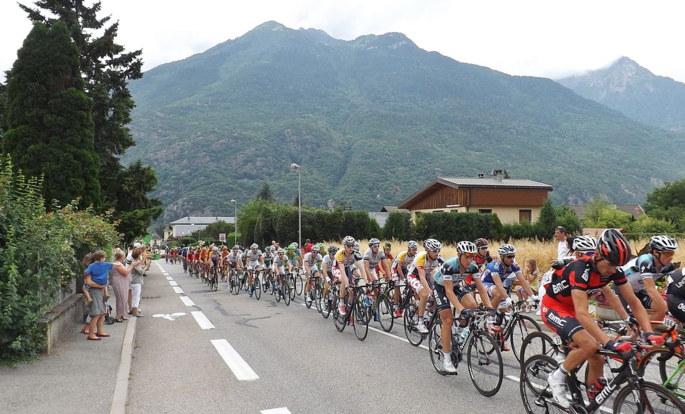
As the name suggests, the Tour de France is a race that largely takes place across many regions of France. It winds from sea level to several kilometres high when it takes in the the mountain stages. Each stage brings its own sense of difficulty for some riders, with the classification meaning that they are often split into sprinters and climbers.
In recent years, organisers have mixed things up by starting the race in different bordering countries. So far these have ranged from Germany, the Netherlands, the United Kingdom, Belgium, Monaco, Luxembourg and Switzerland. One of the main reasons behind this was to increase the exposure of the tour and bring a little part of it to a wider audience.
The Origins of ‘Le Tour’
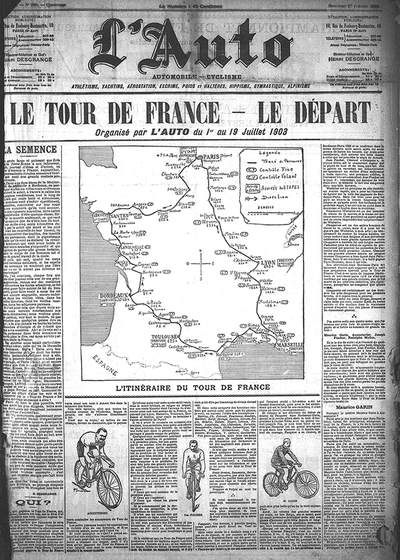
The first Tour de France took place in 1903 and the origin of the race has a lot to do with French newspaper rivalry. At the time there were two main papers that covered sports, with the predominant one being Le Vélo. It sold more than 80,000 copies a day, with the paper’s coverage of the Dreyfus Affair leading a group of journalists and businessmen to set up a rival paper named L’Auto.
Henri Desgrange was appointed as the editor of this new paper and he had a lasting interest in cycling, being a part owner of the Parc des Princes velodrome. He had written numerous articles and books on cycling, leading him to poach a young journalist named Géo Lefèvre to write about cycling for the paper. Unfortunately, sales were not what those behind the venture had been hoping for and so a crisis meeting was called in November of 1902.
Coverage of long-distance cycling races had been popular for years, though they were normally short events that took place on tracks. Lefèvre suggested that the paper might be able to increase sales if they were to organise a six-day race that took place not just on a track but on roads all around the country. Victor Goddet, the financial backer of the paper and the man who part-owned the velodrome with the editor, loved the idea and reportedly handed Desgrange the keys to the company safe with the instruction that he should ‘take whatever you need’ to make the race a reality.
The First Tour in 1903
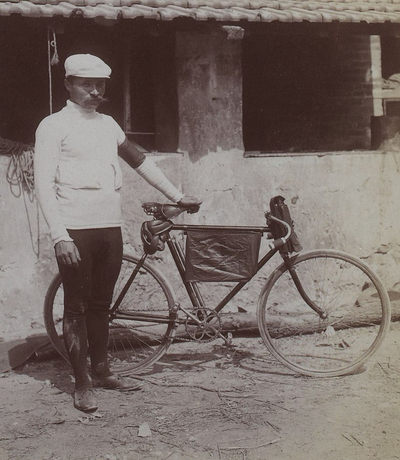
The first ever Tour de France was announced on the 19th of January 1903, with a five-stage race planned from the 31st of May to the 5th of July. It was to begin in Paris and take in Lyon, Marseille, Bordeaux and Nantes before returning to the country’s capital for the winner to be crowned. The idea was that cyclists would journey through the night and complete each stage the following afternoon before being given rest days, but the very idea was too daunting for most. Faced with the possibility of having to cancel the entire thing, Desgrange decided to cut it down to nineteen days and offered cyclists who averaged more than 20 kilometres per hour a daily allowance.
Desgrange also introduced a few other ideas that would be altered but maintained in certain ways in future Tours, including a prize of 3,000 francs for the winner of each day. The first prize for the competition was announced to be 12,000 francs, which was about six times the yearly wage for the majority of French workers. The result of Desgrange’s alterations was a huge increase in those entering, with around 80 entrants putting their names forward. A good chunk of them were professionals, though some were simply the unemployed who were hoping to earn some money to live.
The inaugural Tour de France began outside a Café named Reveil-Matin in the French village of Montgeron at 3.16pm on the 1st of July 1903. The initial stage alone was too much for most riders, meaning that just 24 riders began the fifth stage. They continued around the country and the race came to its conclusion outside the Restaurant du Père Auto before the riders headed into Paris on a ceremonial ride. The winner was Maurice Garin, but far more important was the fact that L’Auto’s circulation doubled as a result of the race’s invention.
Expansion and Evolution
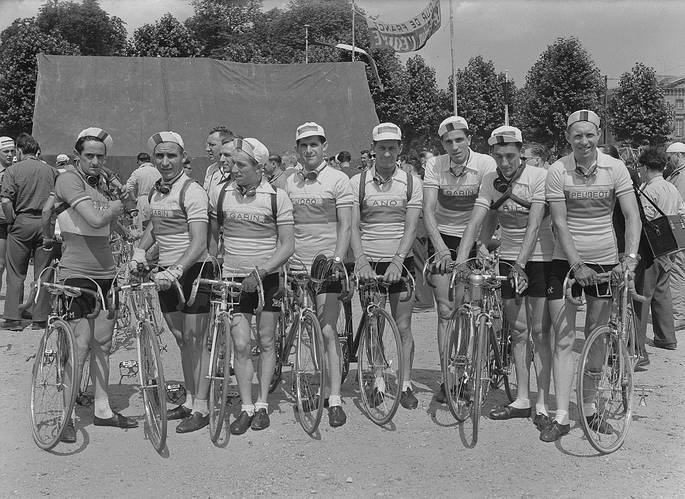
The Tour de France almost ended before it had really begun. The passion ignited in both riders and spectators meant that the 1904 version of it was plagued by cheating, with competitors beaten up and attacked just outside St-Étienne. The paper printed a headline in the wake of the race that stated simply ‘THE END’. It wasn’t, of course, with another tour in the planning by the following Spring. This time Desgrange decided to make it longer, at 11 stages, and also chose to make all of the riding occur in the daytime in order to make it obvious when anyone was cheating.
Soaring Public Interest
The stages began at varying times from 3am to 7.30am, which captured the imagination of the French public. The newspaper’s circulation improved from around 25,000 to closer to 65,000 and continued to rise year-on-year as each race took place. By 1908 more than a quarter of a million people were buying L’Auto. The race was suspended during the First World War, but when it resumed there was no less interest in it – by 1923 half a million people bought the paper to read about the Tour de France, which was a significant improvement over Le Vélo, given that the paper went out of business in 1904.
One of the biggest changes that occurred to the race over the years was the way in which the eventual winner was judged. The Tour de France essentially invented the idea of stage racing on a bicycle, so Desgrange needed to perfect the manner in which the competitors were judged. For a while, a total accumulated time was the method chosen. Then, between 1906 and 1912, competitors were awarded points depending on where they finished each day. Neither of these methods entirely convinced Desgrange, however, meaning that he continued to search for a perfect method.
Mountain Stages and Team Orders Introduced
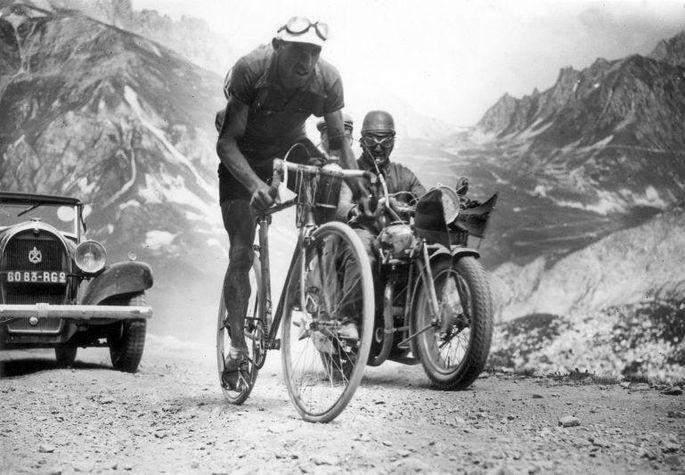
The format of the race also changed over time. Originally it went around the perimeter of France, but Desgrange wanted to make the race an endurance test of the greatest cyclists. The result was the a mountain stage, riding over the Pyrenees, was introduced in 1910. Whilst teams were allowed to enter, he forbade team members from pacing each other until 1925. He was also wary of teams producing bikes that nullified the difficulty of the race, so in 1930 he provided the bikes that the competitors were supposed to ride on. Desgrange died on the 16th of August 1940, at a time when the Tour had been suspended because of the outbreak of the Second World War.
L’Auto Closes, L’Equipe Established
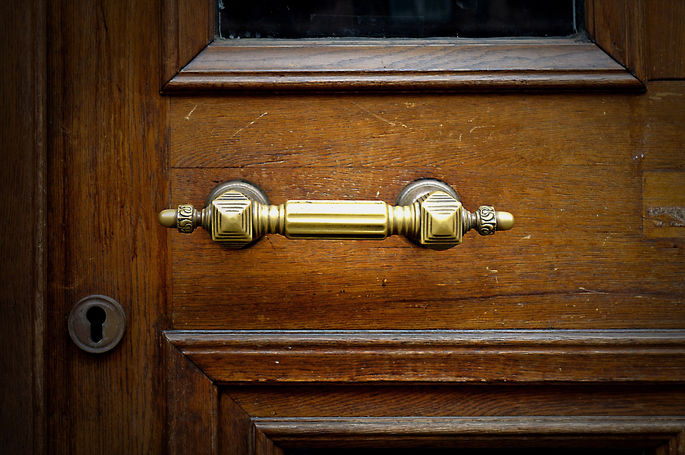
In 1944 the doors to the offices of L’Auto were nailed shut by German soldiers, with the belongings being seized by the government. Jacques Goddet, who took over from Desgrange as race organiser, was allowed to start another newspaper that was given the name L’Équipe. The problem he faced was that Sports and Miroir Sprint had decided to set up a rival tour called La Ronde de France. This led to L’Équipe and Le Parisien Libéré combining to create La Course du Tour de France, with both races scheduled to take place at the same time.
Perhaps somewhat unsurprising, given Goddet’s history with the race, the one organised by L’Équipe was more popular with the public and so in 1947 they were given the rights to organise the Tour de France. In the years that followed the format continued to change, with 1953 seeing the introduction of the Green Jersey and the competition that came with it. The Tour was for professional cyclists, so in 1961 a version for amateurs was started with the name of the Tour de l’Avenir. Six years later and the death of Tom Simpson led to the introduction of limits to distances raced, with the Union Cycliste Internationale behind the move.
Classifications and Jerseys
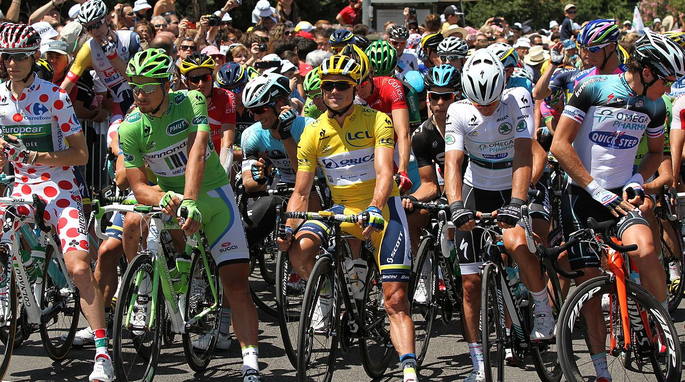
The beauty of the Tour de France is that it isn’t just about the winner of the race. It has numerous classifications within it, meaning that riders can win things based on different specialities. The likes of points riders, mountain racers and young riders are all able to be rewarded for their efforts. The leader of each of these classifications wears a jersey of a specific colour, with the most sought after being the yellow jersey that is worn by the winner of the general classification.
The Yellow Jersey (General Classification)
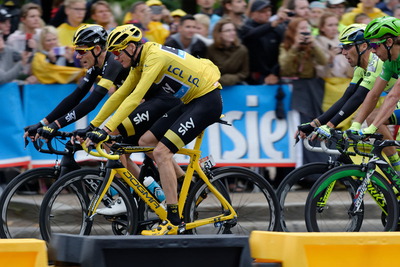
The general classification is worked out according to the rider’s time. The rider with the lowest aggregate time at the end of each stage of the race is considered to be the leader and given the famous yellow jersey to wear. It is presented to them in each town at the end of a stage and if they happen to be leading in more than classification then they still wear the yellow jersey as it’s the most important.
Interestingly, the reason the jersey is yellow is because the original L’Auto newspaper was printed on yellow paper. The leader of the first ever Tour de France was therefore given a yellow armband and this developed into a yellow jersey by the time of the 1919 edition of the race. The jersey isn’t something presented by the race organisers. Instead, each team brings numerous yellow jerseys within them each year in case one of their competitors becomes the race leader.
The person with the lowest combined time from each section after all the stages have been completed will be declared the general classification winner and, ultimately, the winner of the Tour de France.
The Polka Dot Jersey (Mountains Classification)
Next up is the Mountains classification. This is arguably the second most lucrative classification to win behind the general. This is awarded to the rider who has the lowest time on the mountain stages of the race. Often riders will either be suited to sprints or climbs better than another, so for some the overall classification might be out of reach, but the fact that they are such a good climber might mean they can realistically win the mountains classification.
The Green Jersey (Points Classification)
The next classification comes from the points class. The wearing of a green jersey highlights the leader of this classification and is one targeted at the sprinters of the tour. Points are awarded on a ranking basis for these stages and also include a points mark throughout the mid-point of each race. The person with the highest points in the race will retain the green jersey for the following race, before the overall winner is announced.
The White Jersey (Best Young Rider) and Other Awards
Other classes include the young rider classification for riders under the age of 26, minor classifications for riders who ‘animate’ the day, often by going off on mad sprints, and finally the intermediate classification for riders who are leading at certain stages of the event.
Doping and Performance Enhancing Drugs
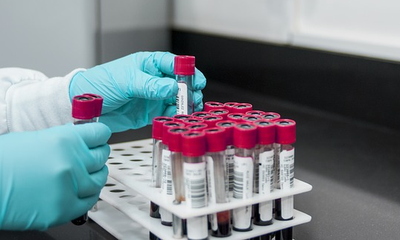
The Tour de France has been plagued by accusations of doping since as early as the first race. In the formative years this included the likes of alcohol and ether being used to numb the pain of the riders, but since then the chemicals used became more serious. For example, brothers Henri and Charles Pélissier admitted in 1924 that they had used horse ointment, strychnine, cocaine, chloroform and aspirin to help them to win the race.
The 1967 death of Tom Simpson, mentioned earlier, was due to the British sportsman using amphetamine to help him climb Mont Ventoux. Arrests were made of cyclists in 1998 that had erythropoietin, growth hormones, amphetamines and testosterone on them. It led to both the Union Cycliste Internationale and the race organisers introducing further tests to limit the possibility of doping, including blood tests.
Lance Armstrong
The most famous incident of doping surrounded the American cyclist Lance Armstrong. Having won his seventh consecutive Tour de France in 2005, the sportsman was rocked by accusations in L’Équipe that they had evidence of him using EPO in 1999. Ultimately the United States Anti Doping Agency felt it had enough evidence to disqualify Armstrong from all of his victories and issuing him with a lifetime ban from the sport. Though he argued his innocence, he admitted he had been doping when he appeared on the Oprah Winfrey Show in 2013.
Interesting facts
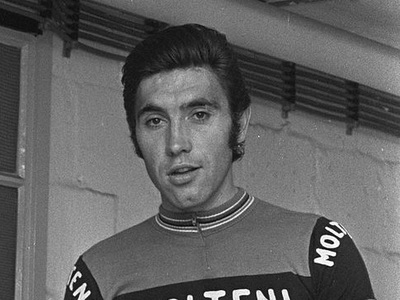
In 1969 a racer named Eddy Merckx was named the King of the Mountains at the same time as he won the points classification, the combination class and the overall tour. This was the first time that such a thing had happened in the same year and it’s not an achievement that has been repeated since.
On two separate occasions a rider has gone through the entire Tour de France and not worn the yellow jersey at any stage of the event but has still gone on to win it overall. The first time this happened was in 1947 when Jean Tobic did it, then in 1968 Jan Janssen repeated the trick. Obviously a race that has been taking place since 1903 has far more interesting facts to boast that those, so here’s a look at some of the best ones:
- The slowest rider is nicknamed the lanterne rouge, or red lantern. This is representative of the red light at the back of a car
- Since 1975 the race has finished at the Champs-Élysées
- At the time of writing, the race has started in the UK twice: London in 2007 and Leeds in 2014
- The Tour has started 6 times in the Netherlands, more often than any country other than France
- Millions of people line the route of the Tour, making it one of the best attended sporting events in the world
- In 1983 the musical group Kraftwerk had a hit entitled ‘Tour de France’
- Four cyclists have died racing in the Tour de France, with a further seven fatal accidents taking place
- The race has been won by a rider who has had the yellow jersey from the first stage until the last on just three occasions: Maurice Garin in 1903, Ottavio Bottecchia in 1924 and Nicolas Frantz in 1928
- Sylvain Chavanel has appeared in more Tours than anyone else, doing so 18 times
- Four riders have won the race five times, the joint most: Jacques Anquetil, Eddy Merckx, Bernard Hinault and Miguel Indurain. Britain’s Chris Froome has won it four times at the time of writing
